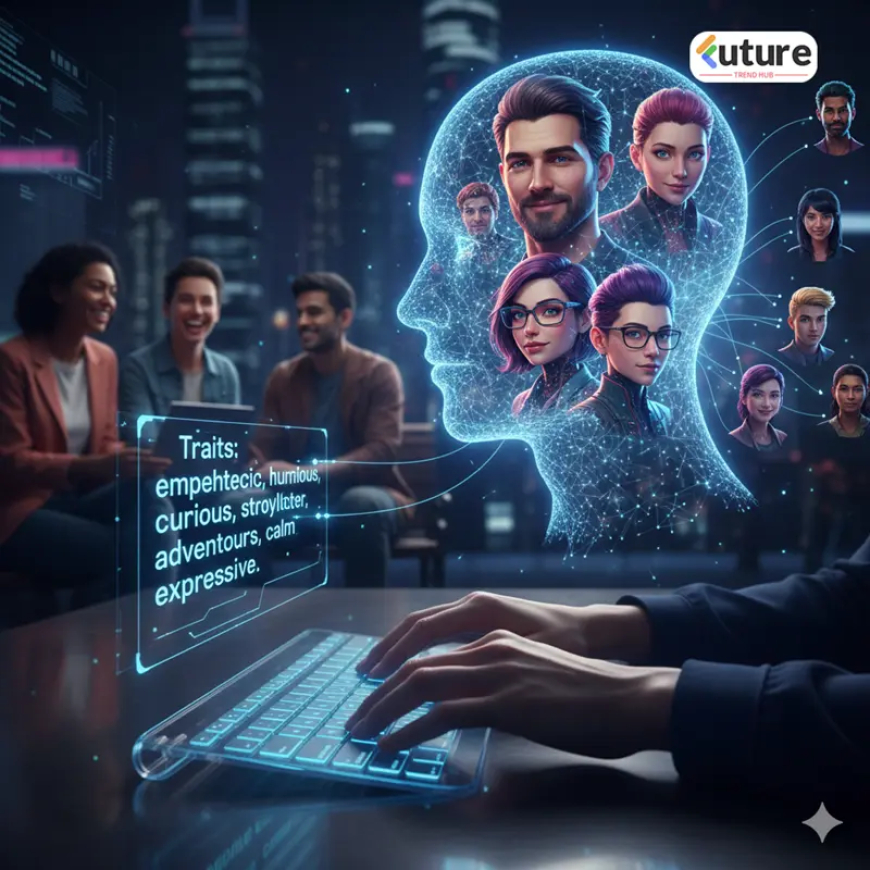From Prompt to Personality: How Customizable AI Avatars Will Redefine Human Connection
Discover how customizable AI avatars are evolving from simple prompts to fully expressive digital personalities. Explore their role in communication, identity, and the future of human-AI relationships.

From Prompt to Personality: The Future of Customizable AI Avatars
A few years ago, talking to an AI felt like sending a text into the void — cold, functional, and transactional. You’d type a prompt, get a decent answer, and move on. But something is shifting. The next era of artificial intelligence won’t just respond to us; it will relate to us.
Welcome to the world of customizable AI avatars — digital beings that don’t just follow commands, but develop a tone, a style, even a personality.
The Evolution: From Chatbots to Companions
Remember the early chatbots? Rigid replies, zero emotion, and a vocabulary that made you want to close the tab. Fast-forward to 2025, and AI has evolved into something entirely different.
Platforms like Character.AI, Replika, and Meta’s AI Personas are training models that learn your vibe. They pick up on how you talk, when you pause, what excites you — and then they mirror it. Instead of a static AI assistant, you get a personality that grows alongside you.
This evolution is as much about emotion as it is about intelligence.
Why We Crave Personality in AI
Here’s the thing: humans don’t just want efficiency — we want connection. That’s why virtual assistants with a touch of humor, empathy, or sass suddenly feel more “alive.”
Think of it this way: when you talk to a helpful AI that remembers your favorite coffee order or cracks a joke the way your best friend does, your brain registers it as something more than a tool. It becomes a presence.
That emotional illusion is incredibly powerful — and it’s shaping how future AIs are being designed.
The Customization Revolution
Soon, creating your own AI persona could be as easy as choosing a Spotify playlist.
You’ll set its tone (calm or energetic), its expertise (tech guru, travel buddy, therapist), even its visual style — a digital face that reflects how you want to interact.
Imagine logging into your workspace and being greeted by a personal AI project manager who sounds like your favorite mentor — or relaxing with a virtual movie companion who shares your humor.
It’s not science fiction anymore. Tools like Synthesia, Soul Machines, and Ready Player Me are already giving creators the power to build lifelike avatars that speak, move, and respond with human-level expression.
The Ethical and Emotional Dilemma
But there’s a twist: the more lifelike AI avatars become, the blurrier the boundary between human connection and artificial empathy.
Will people form emotional attachments to their AI companions? (Spoiler: many already do.)
And if those relationships feel real, who’s responsible when emotions get complicated?
Developers are now being challenged to add not just “intelligence” but emotional ethics — making sure these AIs understand empathy without exploiting it.
The Future: Your Digital Twin
Within the next decade, you may have your own digital twin — an avatar that represents your tone, your mannerisms, and your decision-making style. It could attend meetings for you, run customer support, or even act as your public voice online.
Imagine your avatar handling basic client calls or interviews in real time while you sleep — all while sounding authentically you.
This could redefine productivity, presence, and even legacy.
Balancing Innovation and Humanity
As fascinating as it sounds, the future of AI avatars isn’t just about technology — it’s about trust.
If people are going to welcome digital personalities into their lives, they need to believe those systems act ethically and transparently.
The best avatars won’t be the ones that mimic humans perfectly — they’ll be the ones that enhance our humanity.
Because in the end, it’s not about creating machines that replace us. It’s about creating digital versions that understand us.
Final Thought
The leap from prompt to personality marks a new chapter in how we experience AI — not as a faceless assistant, but as a reflection of our own identity.
In the near future, your digital self may not just exist online — it may talk back, smile, and evolve with you.
And when that happens, “Who are you talking to?” might have a more complicated answer than ever before.







